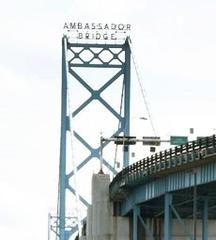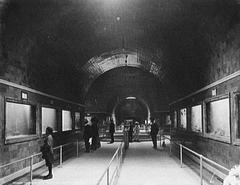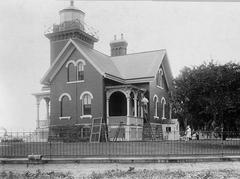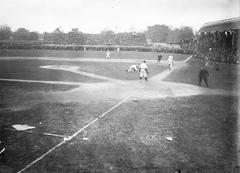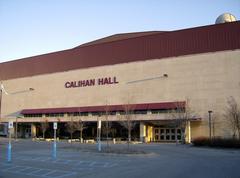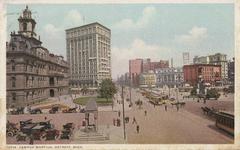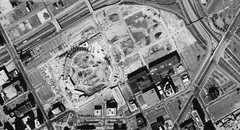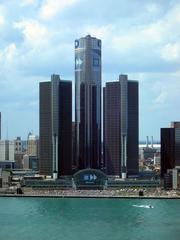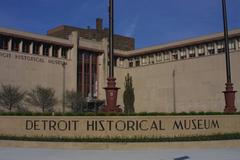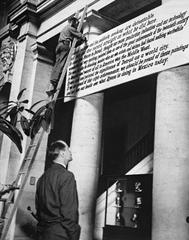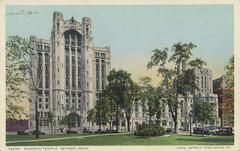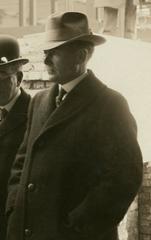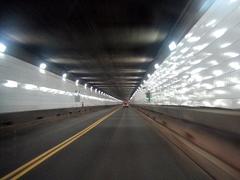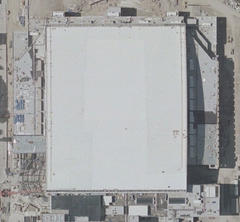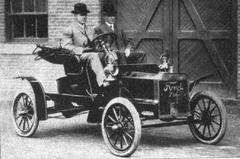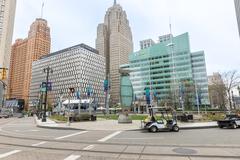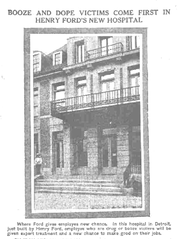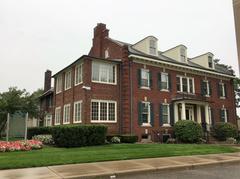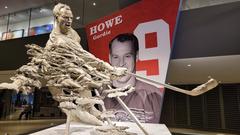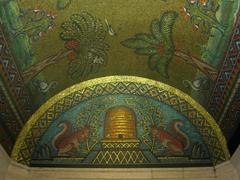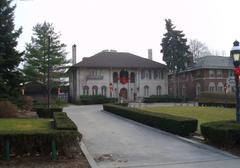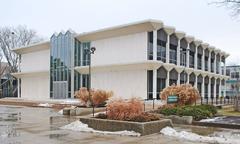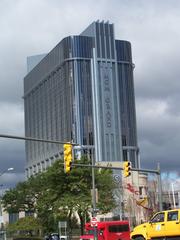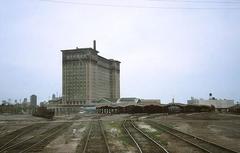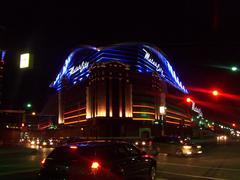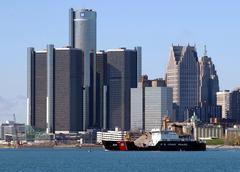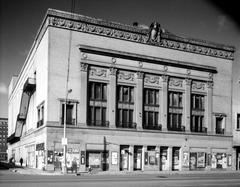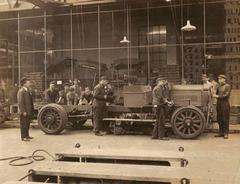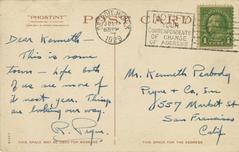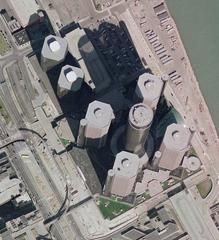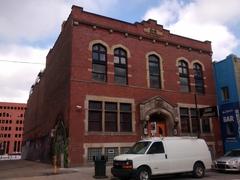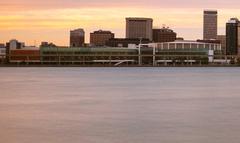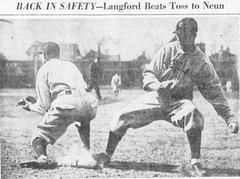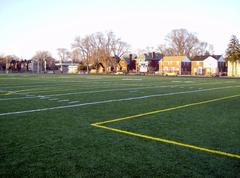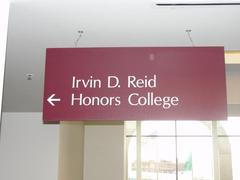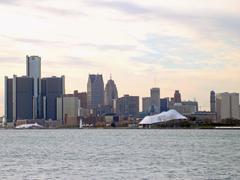
L. B. King and Company Building Detroit: Visiting Hours, Tickets, and Historical Sites Guide
Date: 04/07/2025
Introduction: History and Significance
The L. B. King and Company Building is a distinguished historic landmark in downtown Detroit, reflecting the city’s early 20th-century rise as a hub of luxury retail and architectural innovation. Commissioned by Louis Buhl King in 1910 and completed in 1911, this six-story edifice showcases a blend of Chicago School architecture and Italian Renaissance influences. Its innovative steel-frame construction and elegant white terra cotta cladding made it a modern marvel of its era. Originally the headquarters of Detroit’s leading wholesale china and glassware merchant, the building mirrors the city’s commercial ambitions and growth during a period of significant industrial expansion.
Throughout its history, the building has adapted to Detroit’s changing economic landscape. It later housed the renowned Annis Furs, a symbol of Detroit’s historic fur trade, before undergoing restoration and adaptive reuse. Today, it continues its tradition of luxury commerce, now home to a flagship Gucci store. The building’s enduring presence and ongoing preservation efforts make it both a visual and educational treasure for visitors interested in architecture, history, and Detroit’s urban development. Conveniently situated near Grand Circus Park and other cultural attractions, it is a must-see for anyone exploring Detroit’s rich historic landscape (Historic Detroit; Detroit1701.org; Wikipedia).
Table of Contents
- Introduction and Significance
- Origins of the L. B. King and Company Building
- Architectural Design and Features
- Commercial and Cultural History
- Preservation and Adaptive Reuse
- Visiting Information
- Timeline of Key Events
- Notable Individuals
- The Building in Detroit’s Urban Context
- Frequently Asked Questions (FAQ)
- Summary and Additional Resources
- References
Origins of the L. B. King and Company Building
Louis Buhl King was born in Detroit in 1851, the son of Robert W. King, who established a successful crockery and glassware firm in 1849. The family’s business quickly earned a reputation for offering some of the finest imported glassware and china “west of New York” (Historic Detroit). Louis Buhl King joined the business after graduating from the University of Michigan in 1874 and became company president in 1907. Under his leadership, the firm specialized in wholesale china, reflecting Detroit’s growing demand for luxury goods as its economy flourished (Detroit1701.org).
Architectural Design and Features
Chicago School Influence and Renaissance Detailing
In 1910, the renowned Detroit firm Rogers & MacFarlane was commissioned to design a new headquarters for L. B. King & Company. Completed in 1911 at 1274 Library Street, the six-story structure is a striking example of Chicago School commercial architecture. Its steel-frame construction allowed for expansive storefront windows on the lower floors, inviting natural light and providing maximum display space for merchandise. The upper stories are clad in brilliant white terra cotta, divided into vertical bays with large Chicago-style windows, enhancing both light and aesthetic appeal (Wikipedia).
In 1926, an Italian Renaissance cornice was added, lending further grandeur and visual interest. The building’s restrained ornamentation, rhythmic window patterns, and blend of function and form make it a key example of early 20th-century commercial design (Detroit1701.org).
Commercial and Cultural History
Initially, the building served as headquarters and showroom for L. B. King & Company, attracting Detroit’s elite as a destination for fine china and glassware. In 1932, it became home to Annis Furs, a prominent furrier and a symbol of Detroit’s historic fur trade, which remained until 1983 (Historic Detroit). These uses connect the building to the city’s commercial legacy and its evolution through the 20th century.
Preservation and Adaptive Reuse
The L. B. King and Company Building was recognized as a Michigan State Historic Site and was listed on the National Register of Historic Places in 1987 (Wikipedia). A major restoration in 1988, led by architect Frank Z. Martin, preserved the building’s architectural details and upgraded its interior. In 2022, a flagship Gucci store opened on the ground floor, continuing the building’s legacy as a luxury retail destination (Historic Detroit).
Visiting Information
- Visiting Hours: Public access is currently limited to the Gucci flagship store, open Monday–Saturday 10 AM–8 PM and Sunday 12 PM–6 PM.
- Tickets: Entry to retail spaces is free. There are no regular guided tours; special tours may be offered occasionally by local heritage organizations.
- Accessibility: The building is wheelchair accessible, with elevators serving the retail areas.
- Location & Transportation: Located at 1274 Library Street near Grand Circus Park, the building is easily accessible by car, public transit, and on foot. Several parking garages and bus stops are nearby.
- Nearby Attractions: Grand Circus Park, Fox Theatre, Detroit Opera House, and Belt Alley are all within walking distance.
- Visitor Tips: The best exterior photos can be captured from Library Street. Look for other Rogers & MacFarlane buildings nearby for a broader architectural tour.
Timeline of Key Events
- 1849: Robert W. King establishes crockery and glassware firm.
- 1851: Louis Buhl King is born.
- 1874: L. B. King graduates from the University of Michigan.
- 1907: L. B. King becomes company president.
- 1910: Rogers & MacFarlane commissioned for new headquarters.
- 1911: Building completed at 1274 Library Street.
- 1926: Italian Renaissance cornice added.
- 1932: Annis Furs moves in.
- 1983: Annis Furs closes.
- 1987: Building listed as a historic site.
- 1988: Major restoration completed.
- 2022: Gucci opens flagship store.
Notable Individuals
- Louis Buhl King: Visionary businessman and president of L. B. King & Company.
- Robert W. King: Founder of the original firm.
- Newton Annis: Founder of Annis Furs.
- Rogers & MacFarlane: Architects responsible for the building’s design (Detroit1701.org).
The Building in Detroit’s Urban Context
Situated near Grand Circus Park, the L. B. King and Company Building is part of a thriving district rich with historic and cultural landmarks. Its ongoing use for luxury retail and adaptive reuse contributes to Detroit’s urban vitality and preservation of historical identity (Wikipedia).
Frequently Asked Questions (FAQ)
Q: What are the visiting hours for the L. B. King and Company Building?
A: Public access is through the Gucci store, open Monday–Saturday 10 AM–8 PM, Sunday 12 PM–6 PM.
Q: Is there an admission fee?
A: No, entry to retail areas is free.
Q: Are guided tours available?
A: No regular tours, but special tours may be offered by local historical organizations.
Q: Is the building wheelchair accessible?
A: Yes, with elevator access to the retail floors.
Q: What other attractions are nearby?
A: Grand Circus Park, Fox Theatre, Detroit Opera House, and Belt Alley.
Summary and Additional Resources
The L. B. King and Company Building stands as an emblem of Detroit’s architectural innovation and commercial ambition. Its striking façade and historic status make it a highlight for visitors, even as interior access is limited. Its preservation and adaptive reuse underscore Detroit’s commitment to honoring its past and fostering economic growth. For the latest on tours and events, check local heritage organizations or download the Audiala app for guided tours and maps of Detroit’s historic sites (Historic Detroit; Detroit1701.org; Wikipedia).

